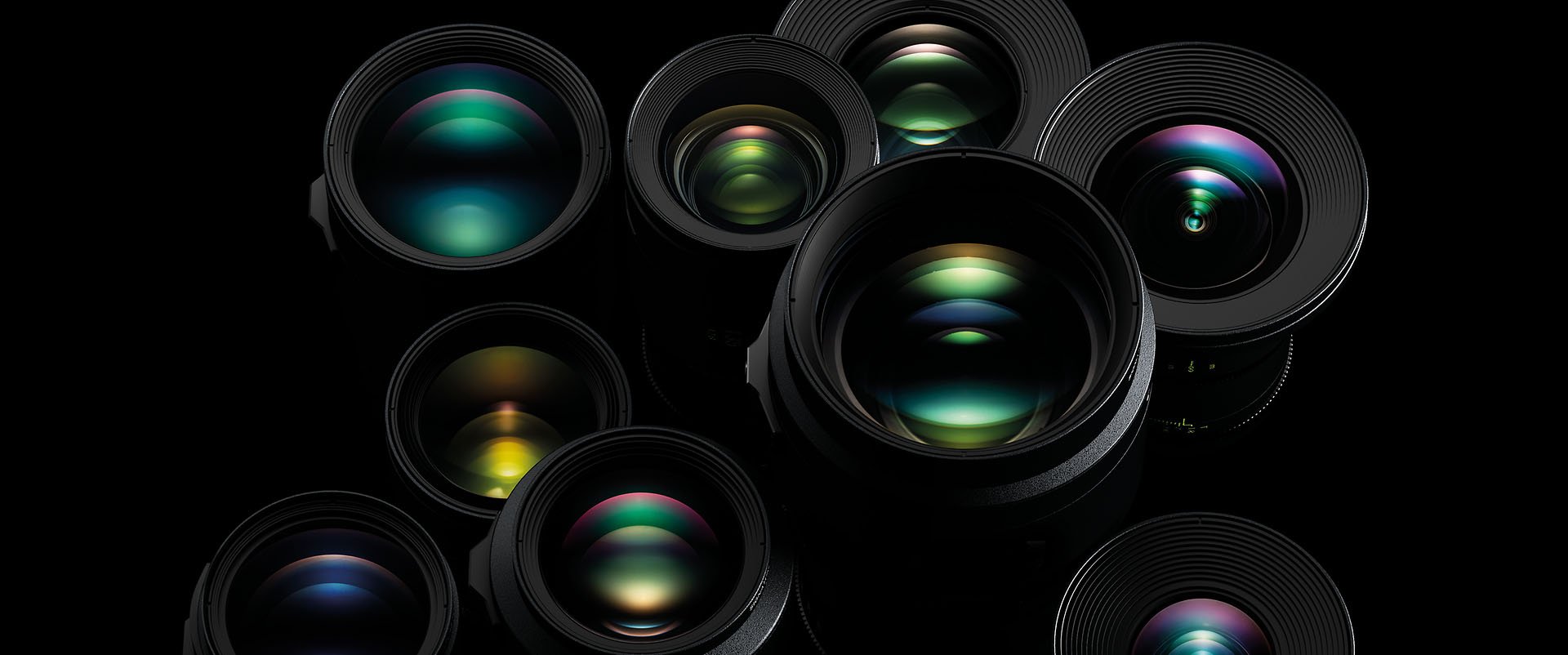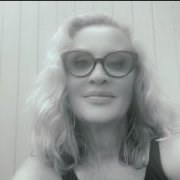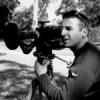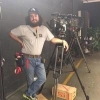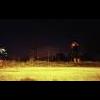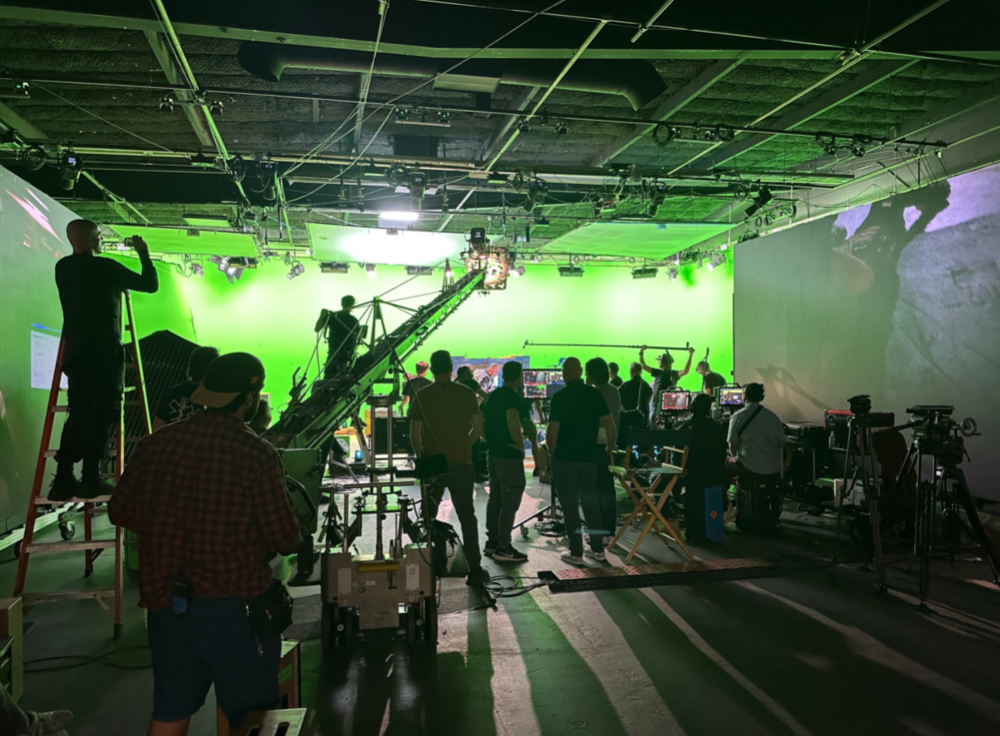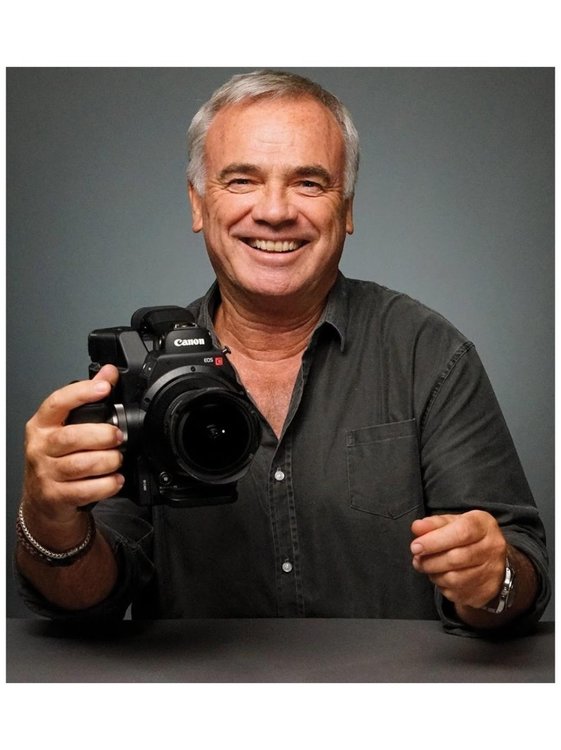-
Posts
1,267 -
Joined
-
Last visited
About Tim Tyler

Profile Information
-
Occupation
Cinematographer
-
Location
Olympia, WA (US)
Contact Methods
-
Website URL
http://www.cinematography.com/
Recent Profile Visitors
143,798 profile views
-
Barbara Holler started following Tim Tyler
-
Tim Tyler started following Adolescence - All About the Challenge and Do Not BUMP Your Posts
-
Do not BUMP your posts. Please read
-
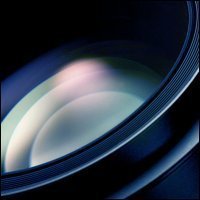
Adolescence - All About the Challenge
Tim Tyler posted a topic in On Screen / Reviews & Observations
First I'll say that I have not seen the finished product. I've just watched the BTS on Youtube. Why was it necessary to film each episode in one continuous take? Why was it necessary to produce this in such a way that undoubtably pushed every crew member and actor's stress level to the limit? A couple of decades ago I served as DoP on a few "48 Hour Film" projects. (No-budget, narrative shorts that are produced from script to screen in two days.) Although they were fun, rewarding, challenging and a good way to meet other local creatives, they always left me feeling like the finished video could have been so much better with more time to produce. I know... that's the point. But still, if each video's producer could get everyone together for two days to make a film, why not get everyone together for two weeks and make a much better film with fewer compromises? So what's the deal with Adolescence? Why not hide edits like Hitchcock did in Rope, or Mendes did in 1917? Especially when working with children. I don't get it.- 1 reply
-
- 1
-

-

Nikon to Acquire US Cinema Camera Manufacturer RED
Tim Tyler replied to Jeremy Saltry's topic in Cinematography News
If the deal actually happens, as a wholly owned subsidiary it's unlikely much will change regarding the products at RED, at least in the short term. Maybe Nikon will commission RED to build a line of Nikon branded cinema cameras (with a Nikon lens mount option?) but I doubt they'd aim to compete with or rebrand any of RED's existing top of the line cameras anytime soon. Nikon would really need to wow the market with a <$ 9,000 camera body that outperforms the competition before they can justify spending the money to compete with high end Arri, Sony and Canon gear. If things go well, eventually new RED cameras might be branded with the Nikon logo. What's certain though is that RED will no longer have the flexibility to be a "do whatever we want" company. They will need to answer to Nikon. -

Nikon to Acquire US Cinema Camera Manufacturer RED
Tim Tyler replied to Jeremy Saltry's topic in Cinematography News
Some perspective. February 2013: Sony, Red End Patent Dispute Red filed for an injunction against Sony, claiming that several of its new CineAlta products, particularly the 4K-capable F65, infringed on patents the company held. They requested that Sony not only be forced to stop selling the cameras, but that they be destroyed as well. Sony filed a countersuit against Red in April 2013, alleging that Red's entire product line infringed on Sony patents. In July 2013, both parties filed jointly for dismissal, and as of July 20, 2013, the case is closed. May 2019: Apple Goes After RED Over Key RAW Patent Apple Inc. filed a lawsuit against Red.com, LLC over several patents relating to digital cinema cameras and sensor processing.[51] Apple lost the case in November 2019. Apple argued that the patents related to Redcode Raw were "unpatentable", but a judge ruled that Apple's legal team had not provided sufficient evidence to back up their claims. November 2019: Court Dismisses Apple’s Attempt to Invalidate RED’s RAW Video Patent A US court dismissed Apple’s challenge to RED’s main RAW video patent, allowing RED to maintain some control over Apple’s ProRes RAW codec. May 2022: RED Sues Nikon for Infringing on its Video Compression Patents The lawsuit was filed in a southern California federal court today and asserts that the Japanese camera manufacturer and its United States subsidiaries have illegally infringed on seven patents that deal specifically with “a video camera that can be configured to highly compress video data in a visually lossless manner.” September 2022: Nikon is Fighting RED’s Lawsuit Over the Z9’s Compressed RAW Video Nikon admitted it was aware of multiple lawsuits that RED had filed in the past against other companies for similar infractions, but added that the claims that RED brought forward in those cases were “invalid” as they did not “satisfy the conditions of patentability.” April 2023: RED’s Lawsuit Against Nikon Dismissed Of note, a Rule 41 dismissal means that the two companies came together and agreed on something, Maddrey explains. While the public will likely never know what the two companies determined, given the money that was probably already spent to hire very well-known law firms on both sides, the two parties definitely decided that whatever agreement they could reach was better than the cost of going through with the litigation. RED’s attorneys likely would not want the case to go to court if there was any doubt that the patent wasn’t going to hold up. By dismissing the lawsuit, RED gets to keep its patent on the books. So while it could be that Nikon paid RED a royalty, it is just as likely that it could have been that RED didn’t want Nikon to pursue the case further to avoid the possibility of weakening its patent. If one court says a patent is invalid, that would have cascading effects. March 2024: Nikon to Acquire US Cinema Camera Manufacturer RED.com, LLC Nikon Corporation (Nikon) hereby announces its entry into an agreement to acquire 100% of the outstanding membership interests of RED.com, LLC (RED) whereby RED will become a wholly-owned subsidiary of Nikon, pursuant to a Membership Interest Purchase Agreement with Mr. James Jannard, its founder, and Mr. Jarred Land, its current President, subject to the satisfaction of certain closing conditions thereunder. -
Tim Tyler changed their profile photo
-
LOS ANGELES (Mar. 3, 2024) – The American Society of Cinematographers (ASC) held its annual awards today with Hoyte van Hoytema, ASC, FSF, NSC earning the feature film award for Oppenheimer. The 38th ASC Outstanding Achievement Awards, held here at the Beverly Hilton, also honored Warwick Thornton for The New Boy in the Spotlight Award category and Curren Sheldon for the documentary King Coal. Winners in the television categories included M. David Mullen, ASC for The Marvelous Mrs. Maisel; Ben Kutchins, ASC for Boston Strangler, and Carl Herse for Barry. Jon Joffin, ASC took home the first ASC Award in the inaugural music video category for Jon Bryant’s At Home. This is van Hoytema’s first ASC Award. He was previously nominated for Dunkirk (2018) and Tinker Tailer Soldier Spy (2012). Watch at https://vimeo.com/918126106 Below is the complete list of winners and nominees: THEATRICAL FEATURE FILM (presented by Lawrence Sher, ASC) Edward Lachman, ASC for El Conde (Netflix) Matthew Libatique, ASC, LPS for Maestro (Netflix) Rodrigo Prieto, ASC, AMC for Killers of the Flower Moon (Apple TV+) Robbie Ryan, ISC for Poor Things (Searchlight) Hoyte van Hoytema, ASC, FSF, NSC for Oppenheimer (Universal Pictures) - winner SPOTLIGHT AWARD (presented by Rodney Taylor, ASC) Eric Branco for Story Ave. (Kino Lorber) Krum Rodriguez for Citizen Saint Warwick Thornton for The New Boy - winner EPISODE OF A ONE-HOUR TELEVISION SERIES (presented by Karen Pittman) Ricardo Diaz for Winning Time: The Rise of the Lakers Dynasty, “The Second Coming” (Max) Rob C. Givens for Gotham Knights, “Daddy Issues” (CW) M. David Mullen, ASC for The Marvelous Mrs. Maisel, “Four Minutes” (Prime Video) - Winner Cathal Watters, ASC, ISC for Foundation, “In Seldon’s Shadow” (Apple TV+) Glen Keenan for Star Trek: Strange New Worlds, “Hegemony” (Paramount+) LIMITED OR ANTHOLOGY SERIES OR MOTION PICTURE MADE FOR TV (presented by Titus Welliver) Dan Atherton for Great Expectations, “The Three Keys” (FX) Sam Chiplin for The Lost Flowers of Alice Hart, “Part 1: Black Fire Orchid” (Prime Video) Ben Kutchins, ASC for Boston Strangler (Hulu) - winner Igor Martinovic for George and Tammy, “Stand by Your Man” (Showtime) Jason Oldak for Lessons in Chemistry, “Book of Calvin” (Apple TV+) Tobias Schliessler, ASC for All the Light We Cannot See, “Episode 2” (Netflix) EPISODE OF A HALF-HOUR SERIES (presented by Dallas Liu and Ian Ousley) Julian Court, BSC for The Diplomat, “The James Bond Clause” (Netflix) Carl Herse for Barry, “Tricky Legacies” (Max) -Winner Jon Joffin, ASC for Schmigadoon, “Something Real” (Apple TV+) Blake McClure, ASC for Minx, “I Thought the Bed was Gonna Fly” (Starz) Andrew Wehde for The Bear, “The Bear” FX) DOCUMENTARY AWARD (presented by Alma Har’el) Jeff Hutchens for Murder in Big Horn, “Episode 1” (Showtime) Curren Sheldon for King Coal - Winner D. Smith for Kokomo City (Magnolia Pictures) MUSIC VIDEO AWARD (presented by Mark Pellington) Scott Cunningham, ASC for Gorilla (Performed by Little Simz) Jon Joffin, ASC for At Home (Performed by Jon Bryant) -Winner Andrey Nikoleav for Tanto (Performed Cassie Marin) This was Mullen’s fifth nomination for The Marvelous Mrs. Maisel and his second consecutive win. Joffin has previously earned ASC Awards for Titans (2022), Motherland: Fort Salem (2020), and Beyond (2019). Last year’s ASC feature film winner was Mandy Walker, ASC, ACS for Elvis. Honorary awards at the ceremony included Spike Lee receiving the ASC Board of Governors Award (presented by Matthew Libatique, ASC, Ellen Kuras, ASC; and Ernest Dickerson, ASC) and Don Burgess, ASC was honored with the ASC Lifetime Achievement Award (presented by Robert Zemeckis). Steve Fierberg, ASC was honored with the ASC Career Achievement in Television Award (presented by Sarah Treem). Amy Vincent, ASC received the Presidents Award (presented by Beverly Wood). The Bud Stone Award was presented by ASC President Shelly Johnson to Sony’s Dan Perry. For more information regarding the ASC Awards, visit the ASC website at www.theasc.com
-

Premium membership to post in the marketplace
Tim Tyler replied to Samuel Preston's topic in General Discussion
I've added a Marketplace Subforum where any member can create a listing as long as the item value is $200 or less. Marketplace Listings Under $200 / €200 -

Premium membership to post in the marketplace
Tim Tyler replied to Samuel Preston's topic in General Discussion
Not such a hefty amount when you combine that motor with the complete ACL II package you advertised a few months ago. -

Premium membership to post in the marketplace
Tim Tyler replied to Samuel Preston's topic in General Discussion
It's basically a small step that helps weed out scammers. For the last ten years I've been manually vetting every single new member account added to the forum, but a few troublemakers still get through. I mean, I'm not running ID's through INTERPOL or anything like that, but an effort is made. A PayPal transaction helps confirm their identity. -
Oscar winning Director of Photography, Erik Messerschmidt, takes us behind the scenes the explain how he shot the opening of David Fincher's new hitman thriller, 'The Killer,' starring Michael Fassbinder.
- 1 reply
-
- 1
-

-
A few months ago, cinematographer Sam Nicholson approached Nanlux’s Mark Bender with a request. He had an interesting project, a live-action trailer for a video game involving live actors on a virtual set. Together with a former colleague, executive producer Mark Long, Nicholson shared that the transmedia project “was a great challenge. I love being involved in any production which has the potential to be innovative.” Director Jerry Flaherty built all the virtual environments himself, which allowed Nicholson to work on inventing new production techniques. “It was a very creative environment with everybody participating. Our record was 79 setups in a day with an average of 70 setups a day. Technology is moving very quickly and allowed us to move quickly.” With a lengthy 12 weeks of pre-production, Nicholson explained that “Unreal assets had to be created beforehand, because you are only as good as your assets on set; although we decided to balance our ICVFX between our mobile LED volume and Ultimatte on greenscreen. I’m a real proponent of not allowing technology to define the creative, but letting the creative define the technology we use,” he said. With Venice II cameras in the Rialto configuration, paired with Angenieux lenses and Nanlux lights, “we had the best hardware configured in a way that allowed us to create what seemed like an impossible project: a 10-day shoot to create 45 minutes of high-level composites on a very tight budget. Our goal was to create an intense live action pilot using live action actors and stunt performers set in a photo real, futuristic world built from the Shrapnel game assets. Our creative goals far exceeded our budget and shooting schedule. Could Shrapnel look better than current trans media projects? Could it be done less expensive, and shot much faster? If we could deliver on good, fast and on budget, we’d have the potential of a great production model for a live action series going forward.” For Shrapnel's unique volumetric lighting setup, Nicholson used 40 Nanlux Evoke 900Cs, as well as 8 Evoke1200Bs and 8 Dyno 1200C soft panels. “We tested other lights, but Nanlux lights gave us both hard and soft light, full color plus high output for daylight. These lights are ideal for image based, kinetic lighting. The bang for the buck is pretty much unbeatable. They are full spectrum, high output, durable and economical; which is an essential combination if you are going to ask your producer for four times more lights. But if you can save 10 minutes on each new lighting setup, there is a definite savings at the end of the day.” Nicholson and his visual effects team mapped the lights through wireless DMX into their custom kinetic lighting control system. “In virtual production you have the live action, but then you have the background being fed by Unreal Engine which creates the 3D environment. We tied our virtual lights in UE5 to the on-set Nanlux lights, so when you adjust the Nanlux light, the UE5 virtual light follows what you are doing on set,” he explained. “Our Nanlux lights and UE5 allowed us to truly connect our on-set lighting to our virtual sets.” The team also designed a new tool, a hand-held DMX trigger, which could be assigned to any light on set or programmed into a crazy sequence. “When doing safe pyro with an air mortar, it can be kind of dry looking since there is no real fire. Just dust and debris. So we took two open lens 900Cs, which are very bright, and put them on either side of the air mortar, then triggered a sequence with a synchronized explosion of light to create the illusion of a fireball. I think it’s a fantastic step forward for any pyro effect. It’s like a giant non-gun; safe, fast and very effective. Nanlux lights responded well to our trigger and control system with results that were really stunning.” Nicholson and his visual effects team mapped the lights through wireless DMX into their custom kinetic lighting control system. “In virtual production you have the live action, but then you have the background being fed by Unreal Engine which creates the 3D environment. We tied our virtual lights in UE5 to the on-set Nanlux lights, so when you adjust the Nanlux light, the UE5 virtual light follows what you are doing on set,” he explained. “Our Nanlux lights and UE5 allowed us to truly connect our on-set lighting to our virtual sets.”
-
- 1
-

-
Los Angeles, CA - November 08, 2023 – JAMM, the acclaimed visual effects and color studio announces their tenured collaboration with famed colorist Beau Leon, and welcomes emerging phenom colorist Jess Jinx (née Vile) to their growing staff. Beau Leon has been working with JAMM since January and brings with him an impressive portfolio bolstered by collaborations with top DPs and directors. With his keen eye for light and hue, his deft touch, and his surgical attention to detail, Beau is applauded by brands, agencies, and film studios around the world for delivering outstanding results that elevate the sensibilities of cinematic storytelling. Jess Jinx ventured to the US after 10 years working with Framestore in the UK. As a celebrated colorist across the pond, she brings with her a wealth of experience working with esteemed brands such as BBC, Spotify, Jimmy Choo, Dr. Marten, Campari, and Cartier. With her unique expertise and versatility in commercials, long-form music videos, and episodic productions, Jess flexes her creative vision across cultures. JAMM’s Executive Producer Ashley Greyson says, “I'm thrilled to be involved in the growth of our color department as we welcome these two talents to elevate our creative capabilities even further. Beau is Beau. His vision is unmatched and we consider ourselves very fortunate to have him coloring with us. And Jess’ arrival brings a refreshing wave of energy and talent to our team. With them both on board, we look forward to continuing to provide the highest level of expertise and service that defines JAMM.” Rounding out the team alongside Jess, Beau, and Ashley are veteran color assistant Aldo Rosati and color producer Dan Ginks. Executive Producer and founding partner of JAMM, Asher Edwards adds, "I’m excited to launch our second color suite, which not only helps fuel the evolution of JAMM, but also gives us even more resources to service the most creative storytellers in the industry.” JAMM is an independently owned, artist-driven visual effects and color studio known for delivering exceptional creative. The studio offers a powerful combination of innovative artistry and advanced technology, collaborating on complex productions that come to life with 2D and 3D visuals, and precise color finishing. The JAMM team builds and maintains trusted long-term relationships by providing nimble strategic guidance at every turn, and an unwavering commitment to quality. https://www.jammvisual.com/ -----------------------------------------------------------------------------------------------------------
-

The Perfect Interview Key Light - Godox F600Bi
Tim Tyler replied to Tim Tyler's topic in Lighting for Film & Video
-

New Sony BURANO CineAlta Digital Cinema Camera
Tim Tyler replied to Tim Tyler's topic in Cinematography News
-
Designed for highly mobile, solo cine-style shooting, the Sony BURANO 8K Digital Cinema Camera offers up to 8.6K video capture in a compact, full-frame form. Unique in-camera stabilization for both E- and PL-mount lenses, Fast Hybrid Autofocus, and an easily adjustable ND filter enhance single-user capture and seamless image matching, making the CineAlta BURANO camera ideal for use as your VENICE B or C camera.
-

The Perfect Interview Key Light - Godox F600Bi
Tim Tyler replied to Tim Tyler's topic in Lighting for Film & Video


